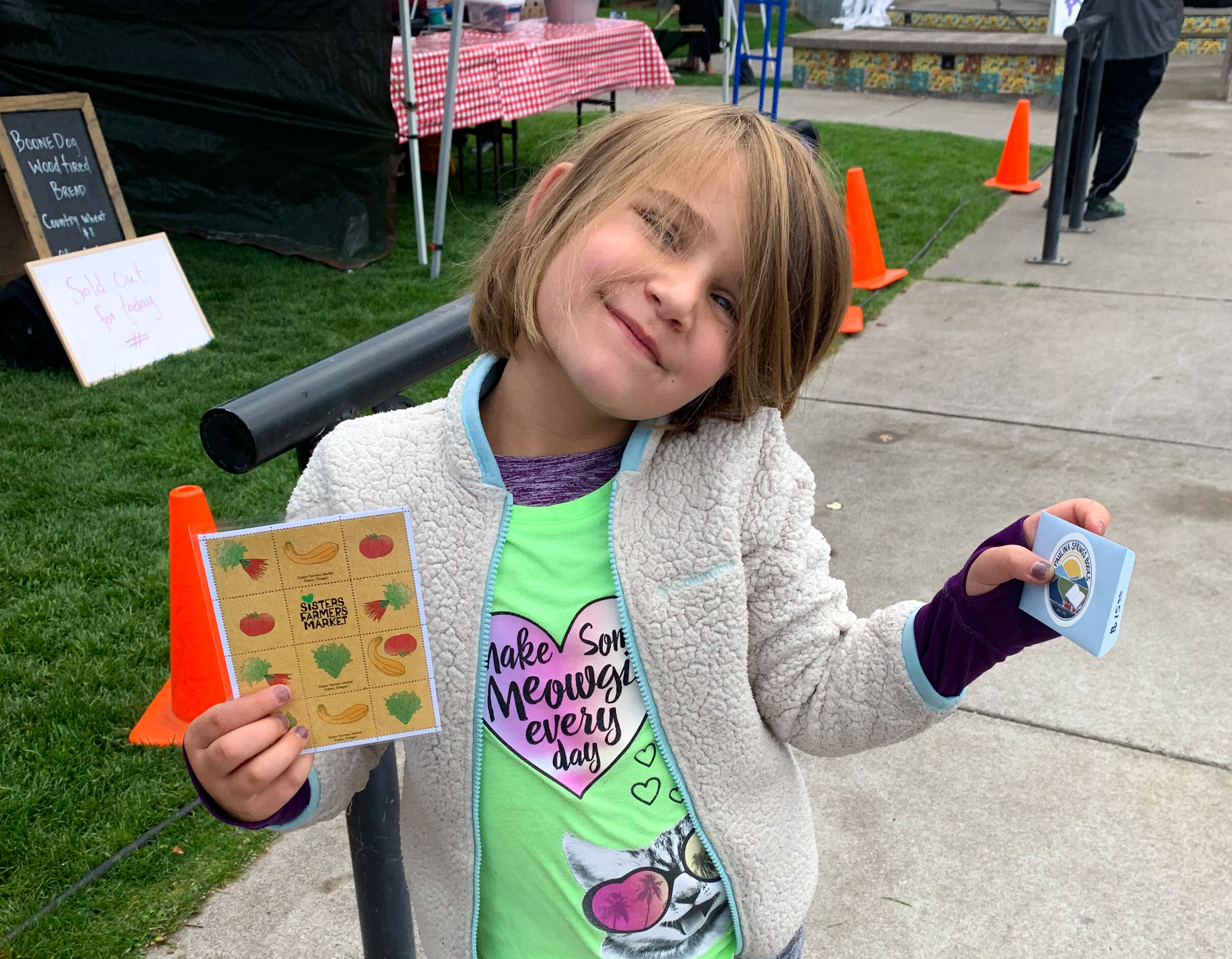"Sit spots" in nature help us get plugged into the big natural world. Wonderful stuff! Read all about it below. Some of this information originally appeared in an article by New Oregon director T. Lee Brown in The Nugget Newspaper. Here, we’ve added some helpful links and other new info. Enjoy!
Local kids used colorful Sharpie pens to make a “story map” with nature connection teacher Susan Prince at New Oregon’s summer solstice event.
How to do a ‘Sit Spot’ in nature
Kids and adults alike can enjoy a regular “sit spot” in a natural setting. From reducing anxiety to improving test scores, the benefits of nature time has been proven both by common sense and by over thirty years of scientific research.
Formerly a nature educator in California, Susan Prince has taught Sisters Country kids through Deschutes Land Trust, SPRD, schools, and New Oregon Arts & Letters. Here she shares tips on getting reacquainted with nature.
The quick summary version?
1) Turn off your phone
2) Sit quietly in nature for 20 minutes
3) Share your experience by drawing a “story map.”
Now let’s dig into some details.
Fox Walk & Owl Eyes
Before heading out, try walking very quietly like a fox, while using your peripheral vision like an owl. “You can see so much more when you’re out there, if you use these tools,” said Prince. Here, she shares her own backyard experience with us. You can listen here on streaming, or download the MP3 file to your device:
Sitting
Quietly walk to a spot in nature. Your backyard may work. If you can go out into a field or forest, sit 15–20 feet away from other people. Housebound? Look out an open window. Set a timer for 20 minutes, and sit.
Observe what’s around you, engaging all your senses. The wind in your hair, the calls of birds, sunlight on water: notice everything around you. Try closing your eyes for a while so you can concentrate on sounds and smells.
It may take a few minutes to let go of everyday worries and settle into being with nature. “If you’re frustrated or impatient, that’s okay,” said Prince. “You’ll still notice things. Next time, it’ll be easier.” If people or machines intrude, notice them the same way you might notice a ladybug or a squirrel.
Story Map
After your sit spot, gather everyone around one big sheet of paper, with plenty of markers or crayons. Chat about what you saw, heard, and felt in nature, while drawing pictures inspired by your experience.
“Our ancestors would be going out hunting, gathering, during the day, and they would come back — no books, no TV, no phones,” Prince said. “They would share what they saw out in nature with everybody around the campfire, and that’s how people in the community learned.”
“They learned where the berries were, where the foxes lived, where the bear was, perhaps,” she said.
In other words: primitive social media, without hearts, likes, or swipes. While nature awareness on its own brings many rewards, Prince said “repeating the story back to the community is a really key part of it.” If you’re socially isolated, send a photo of your solo drawing to friends or family.
Postcard-perfect wilderness images are not necessary. During a Sisters High School sit spot, “you could hear people doing construction on the Hayden Homes,” said Prince. “Students worked that right into the map.”
Age and Attention Span
“There’s a certain amount of supervision required, to make sure that kids stay where they are” and don’t distract each other, said Prince. She said she’s been surprised how rarely they try to talk.
A person’s attention span is an important consideration, but “it isn’t necessarily age-related.” Prince told of a group of homeschool students, mere 2nd through 4th graders. “Those kids could sit for half an hour; they could really hang in there,” she said. “The middle school kids actually had a harder time.”
Sit spots are a practice. Just as in sports, arts, or music, the more you practice, the better results and the longer you can stick with it. “People can definitely get the hang of it,” Prince said.
Coyote Mentoring
Much contemporary education focuses on informing students of various scientific facts. Parents, teachers, and the Internet jump in with information long before a kid has a chance to observe and explore.
Prince prefers the “coyote mentoring” approach favored by her teacher Jon Young, author of “Coyote’s Guide to Connecting with Nature.” If a student noticed a snapping turtle, the mentor might ask, “What do you think about that snapping turtle? How long has it been there? Where does it go in the winter?”
The student learns to think and learn from their personal observations. “If you have to go figure out what the snapping turtle is doing by watching the snapping turtle, you’re going to remember it,” Prince said with a laugh.
Returning
Experts recommend returning to the same spot over and over. “We notice the changes from day to day, week to week, season to season,” Prince explained. “We’re not just walking through it anymore. We’re integrated.”
Read all about Susan Prince’s approach in The Nugget Newspaper this week (online here).


